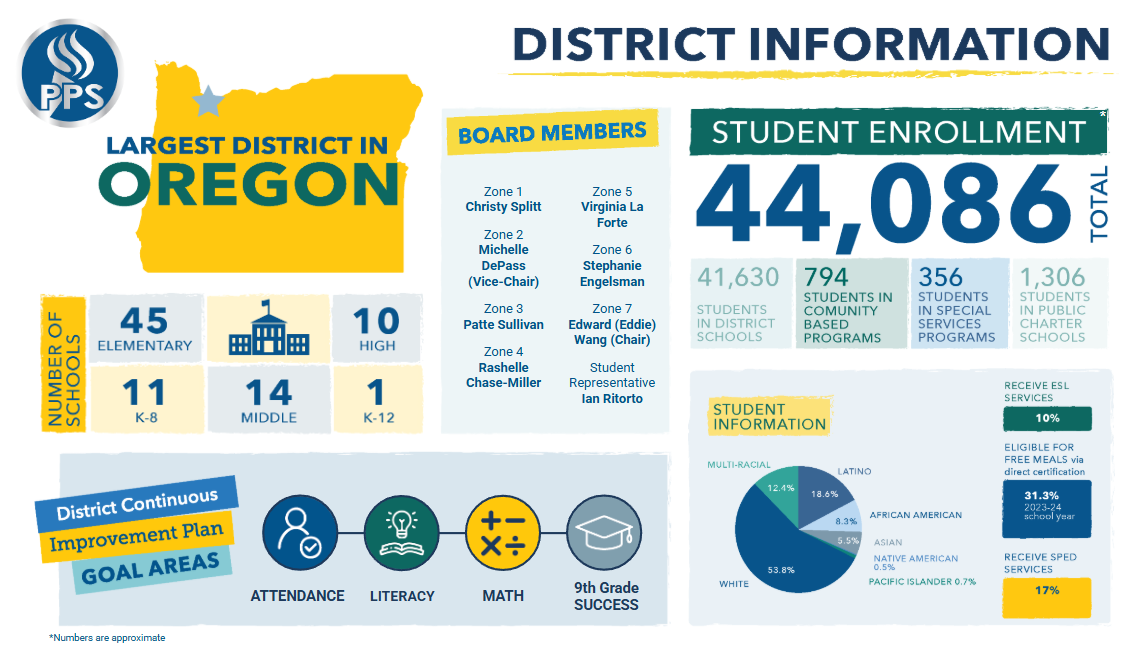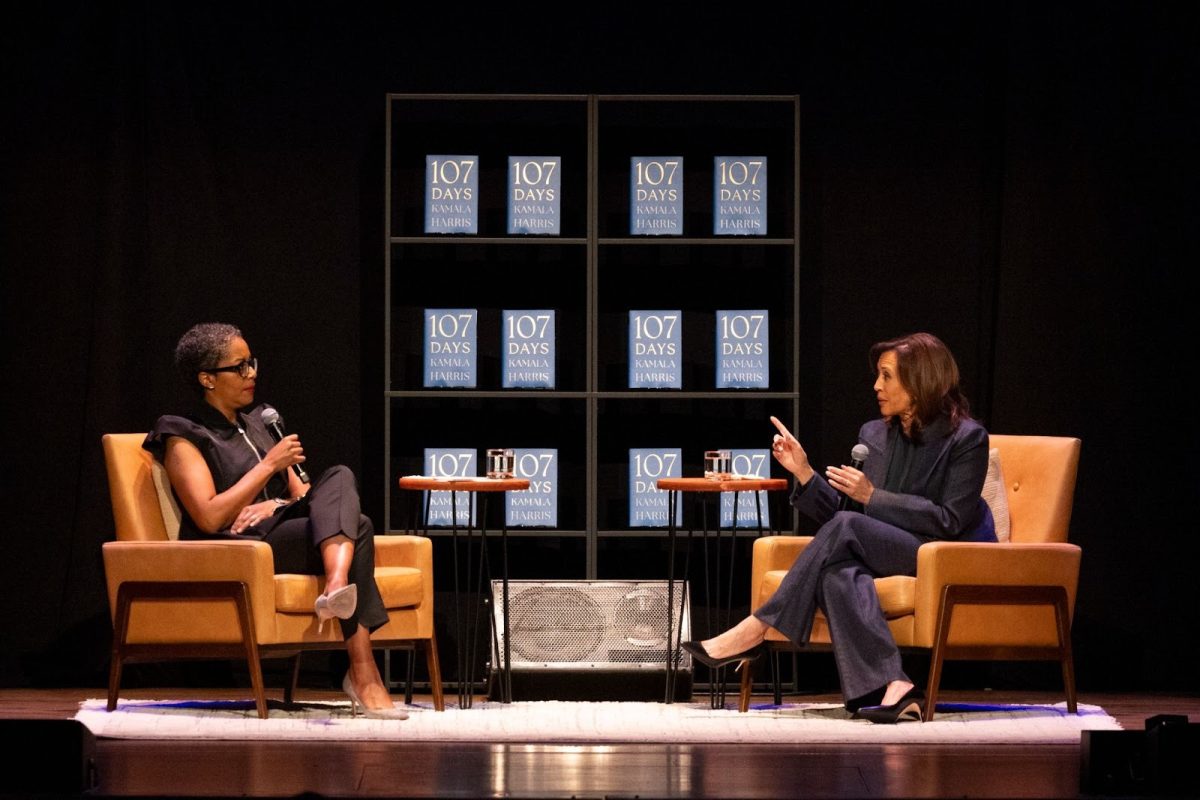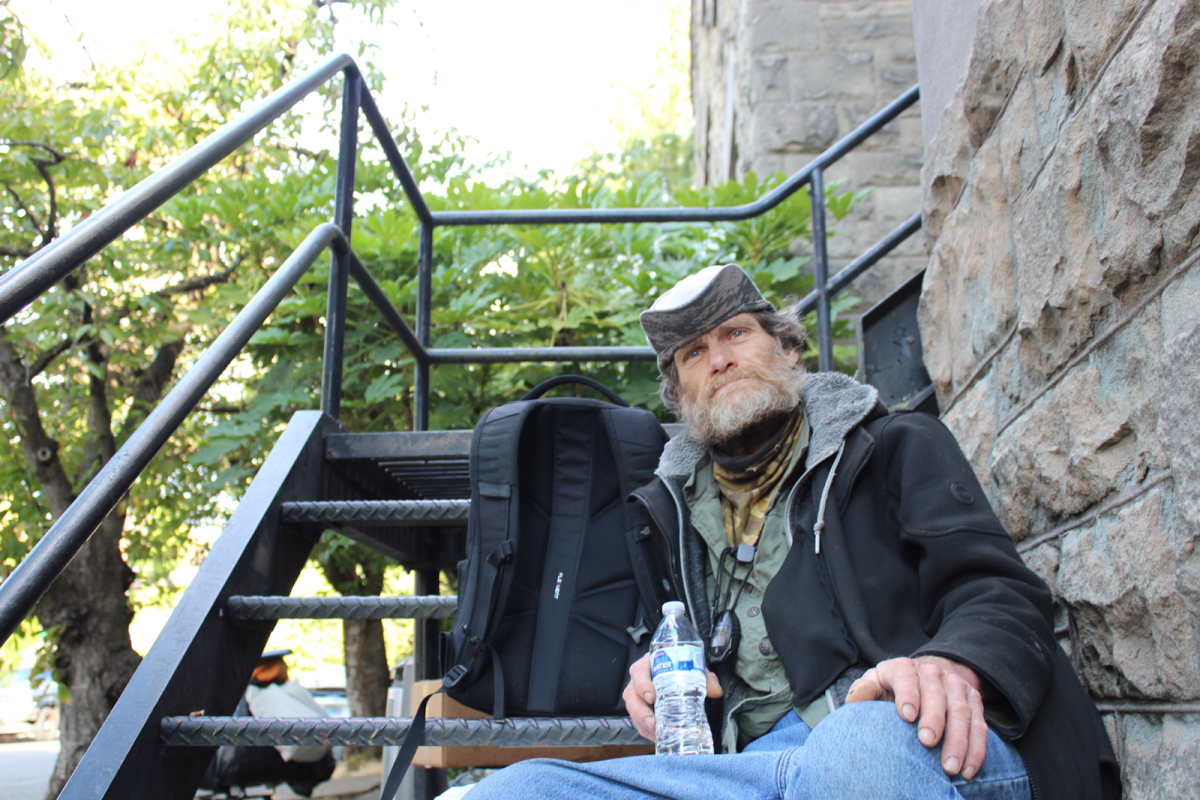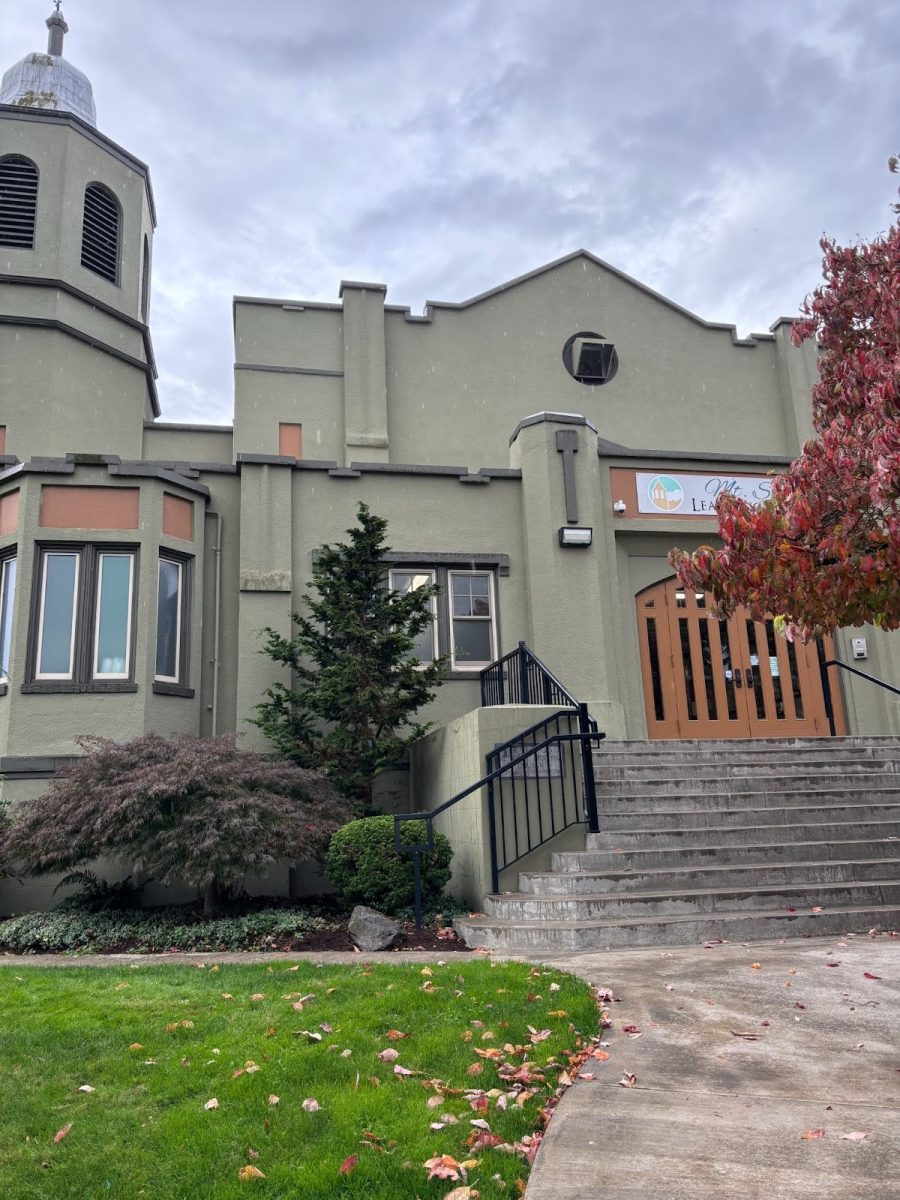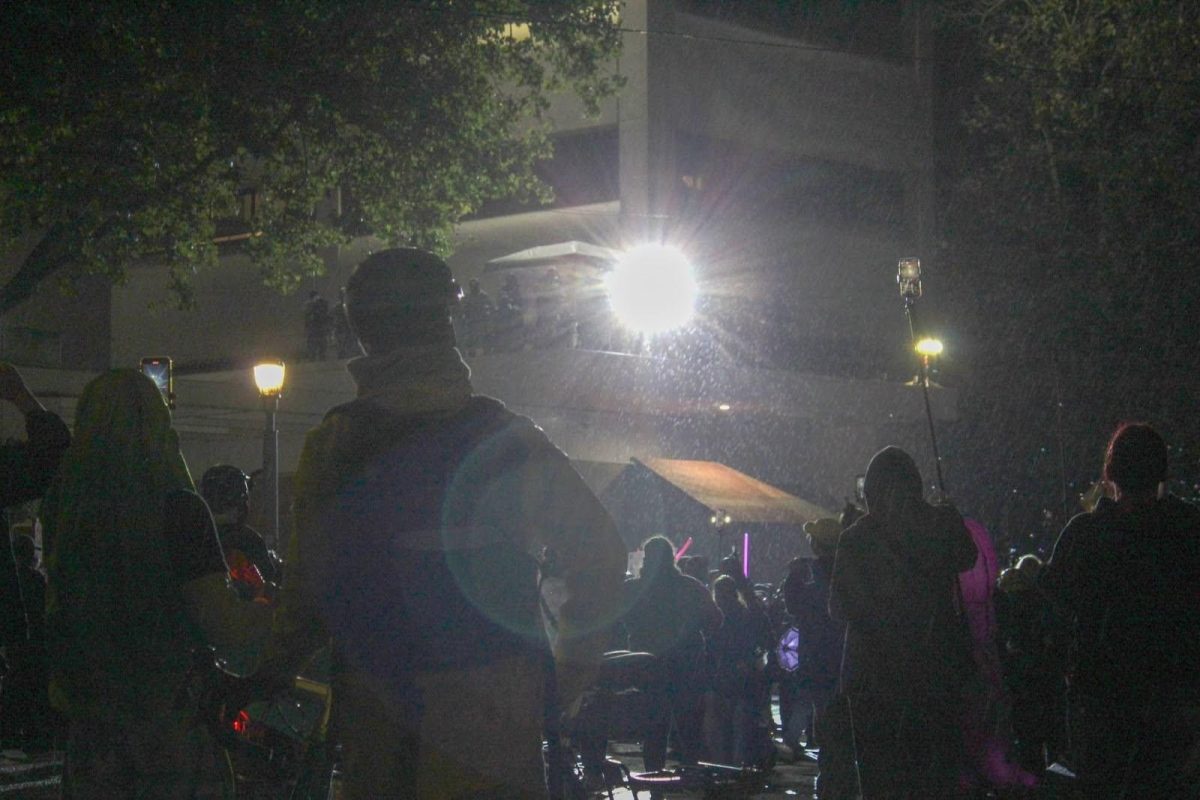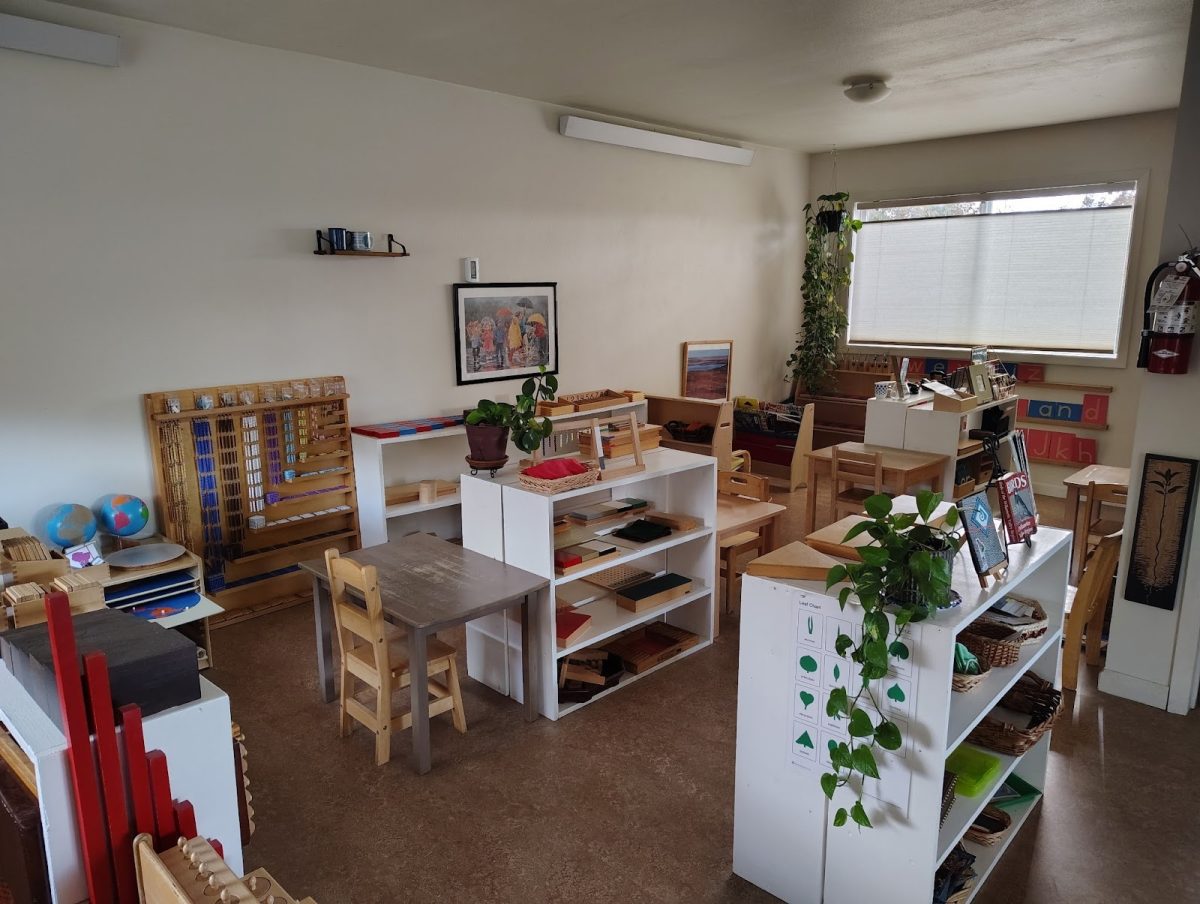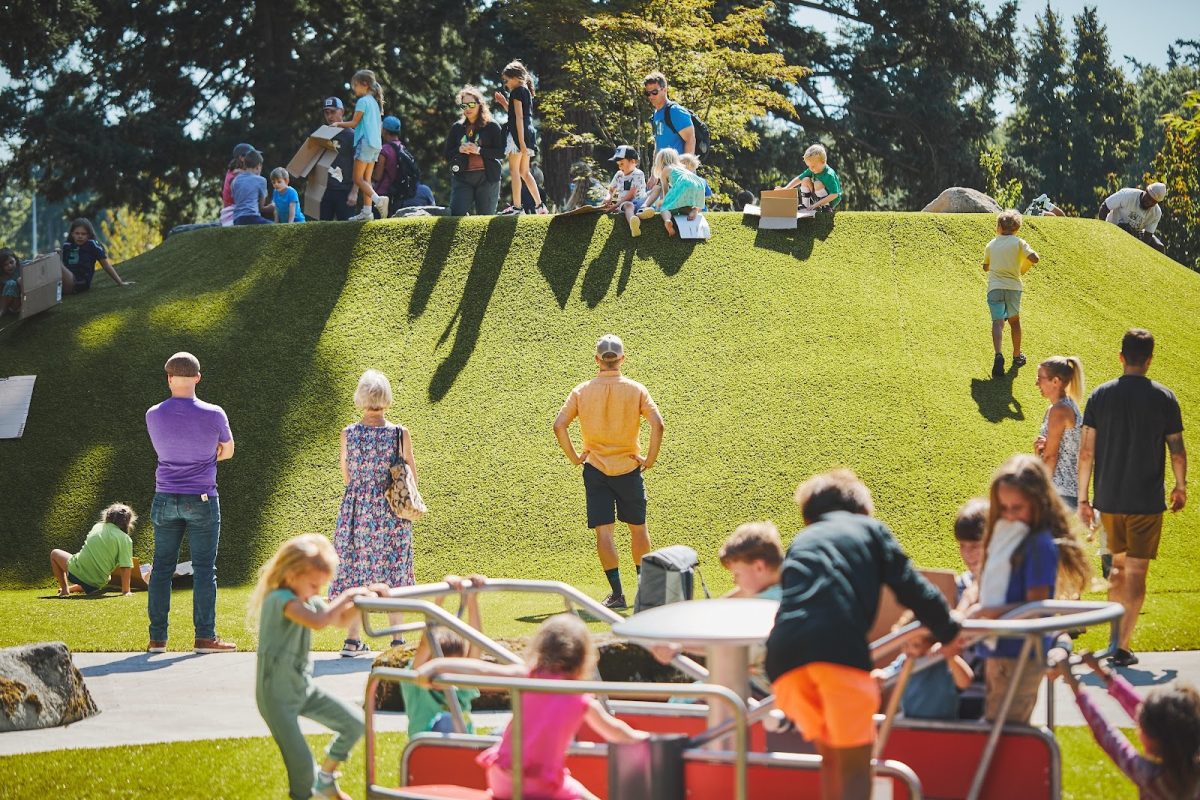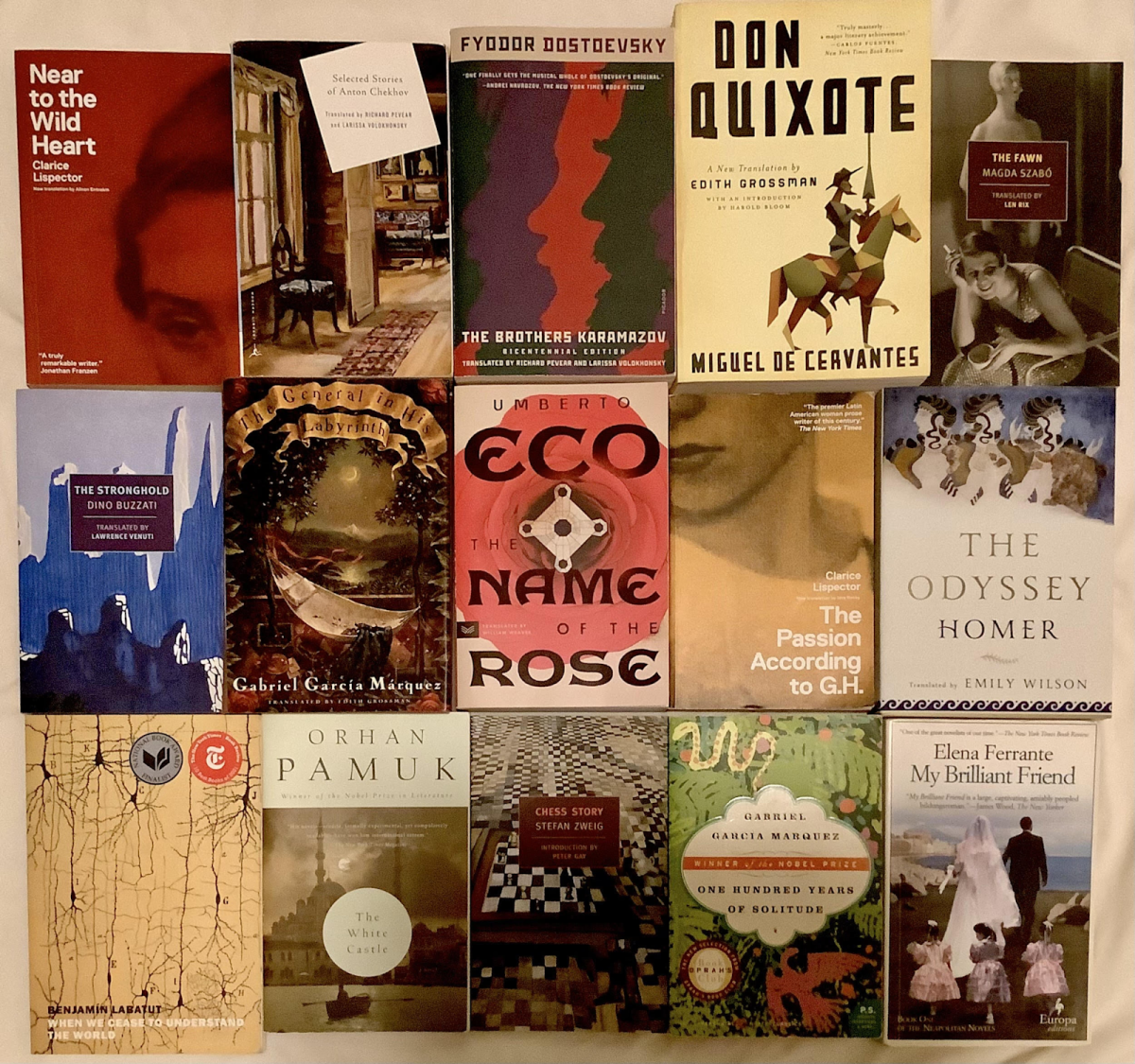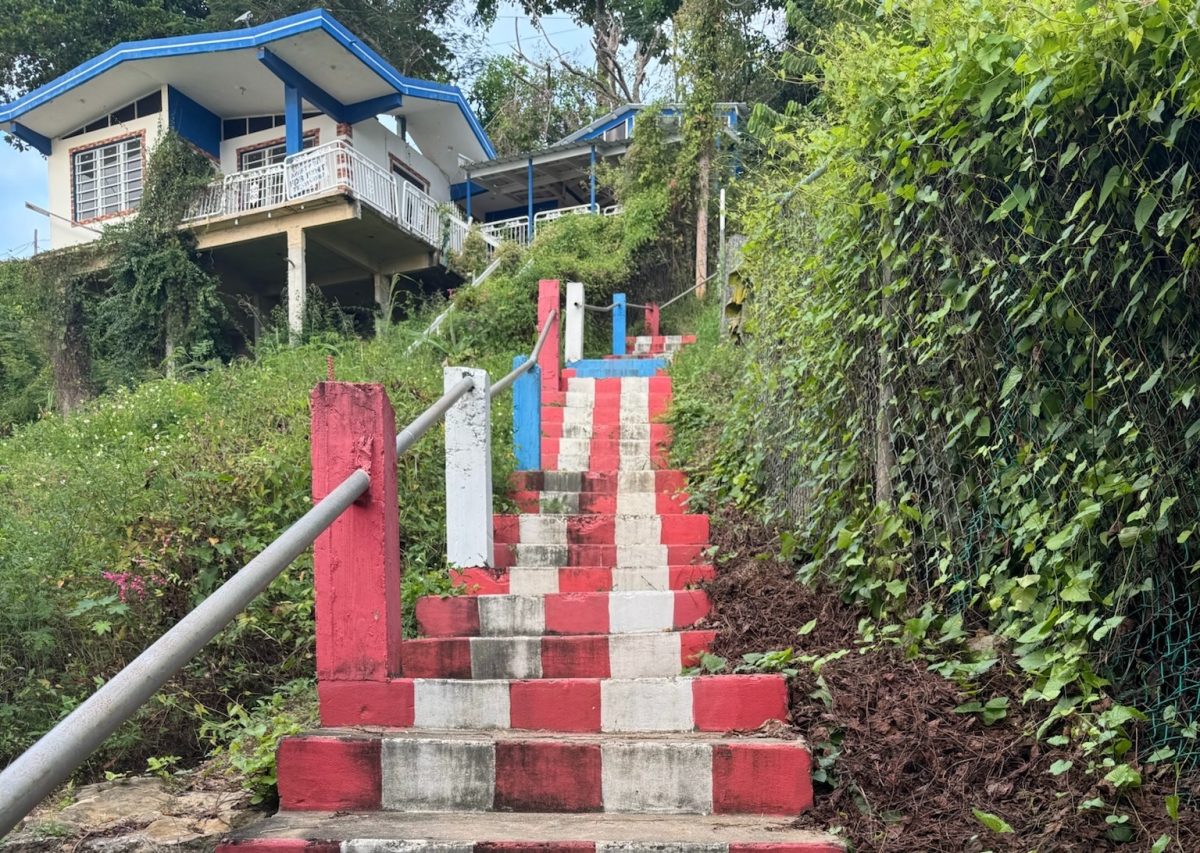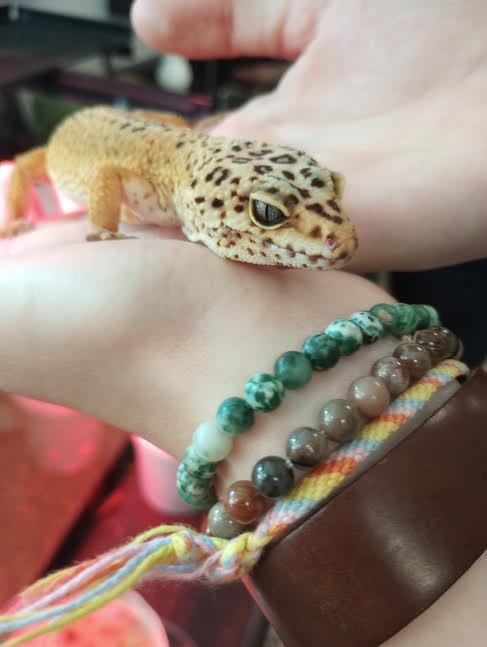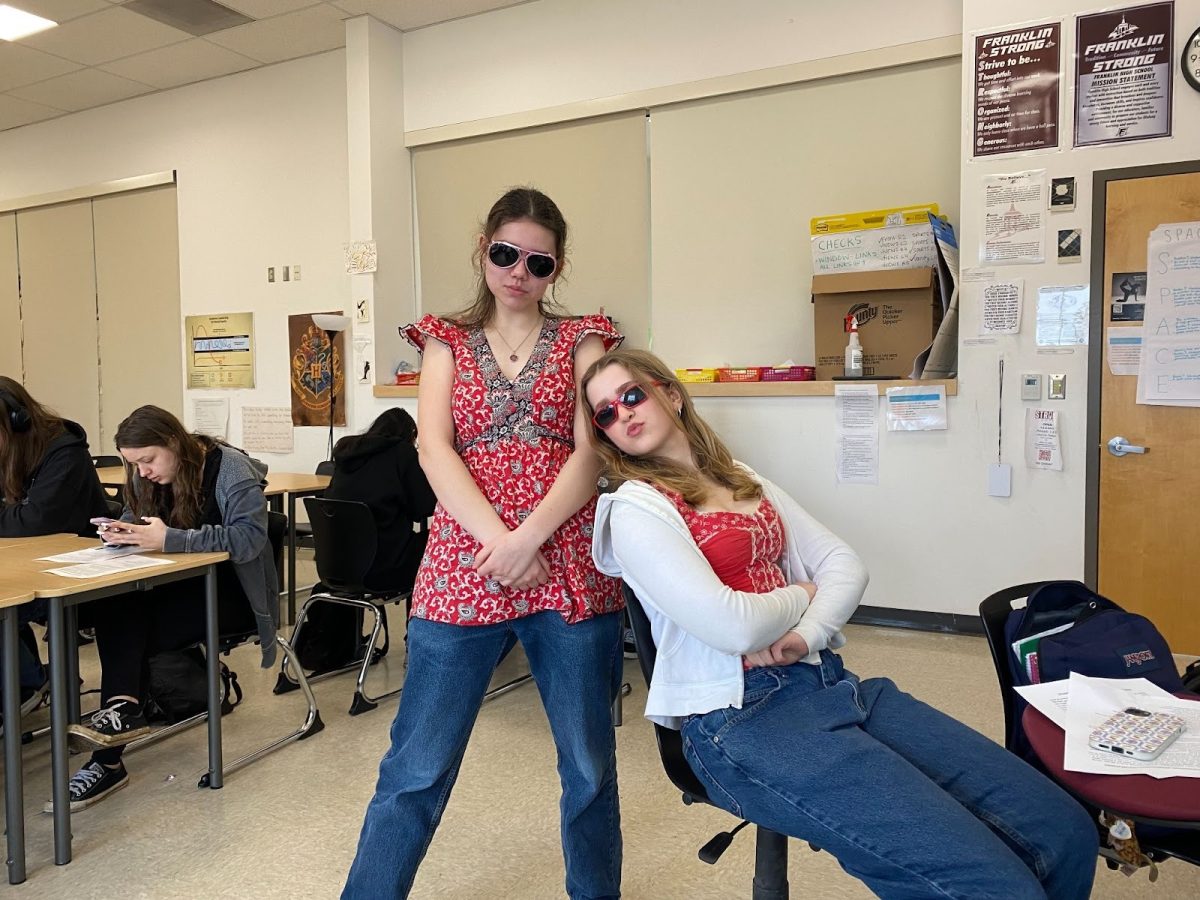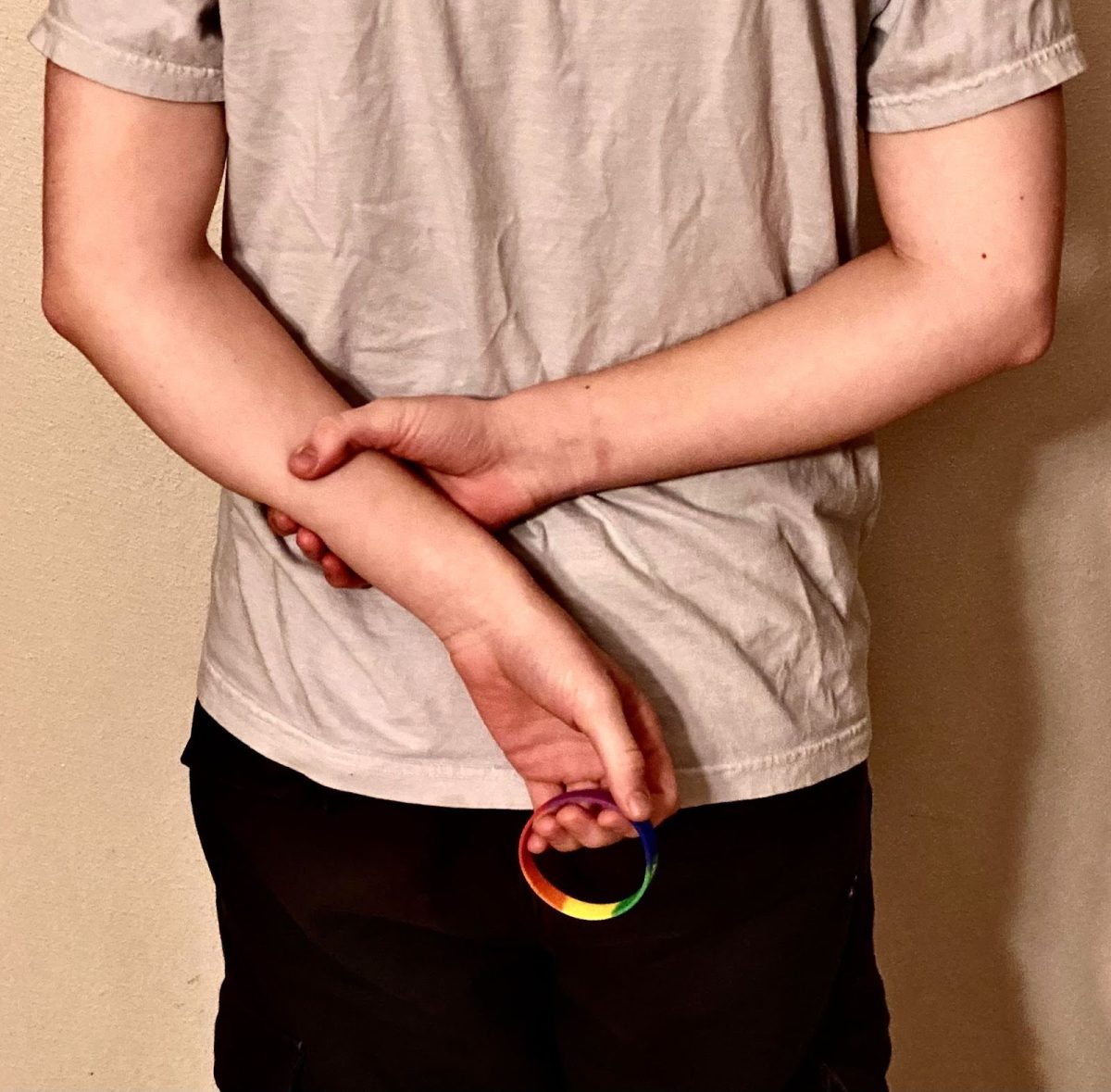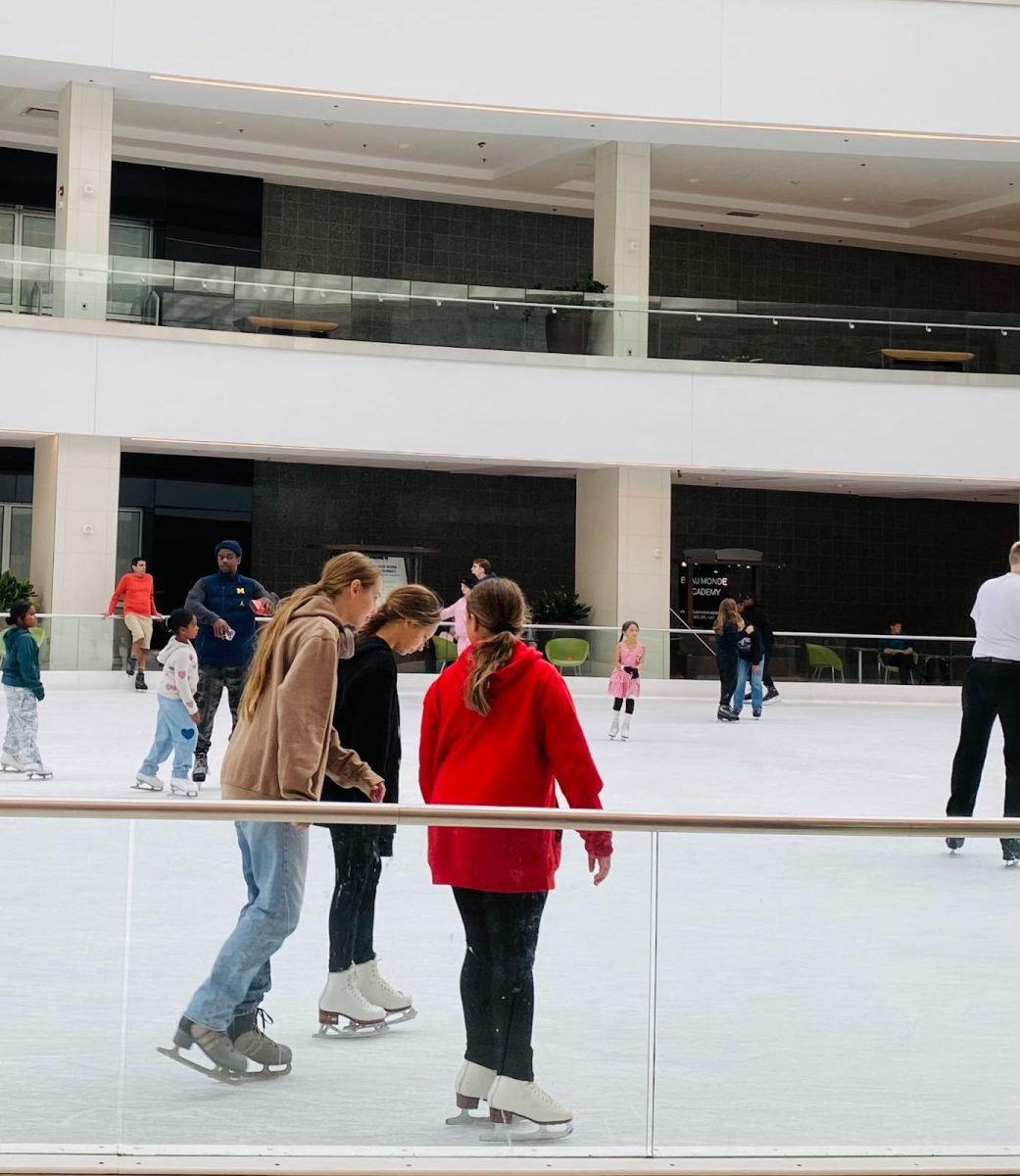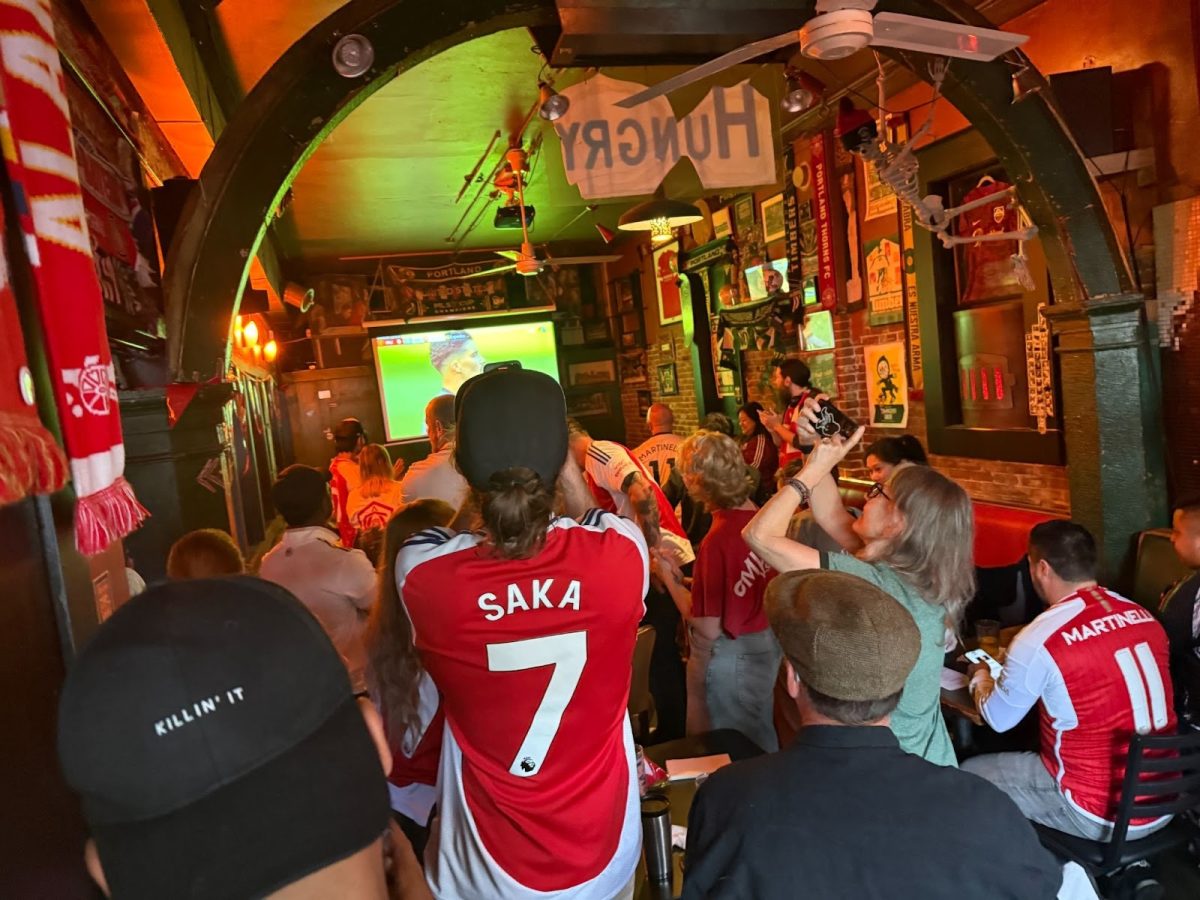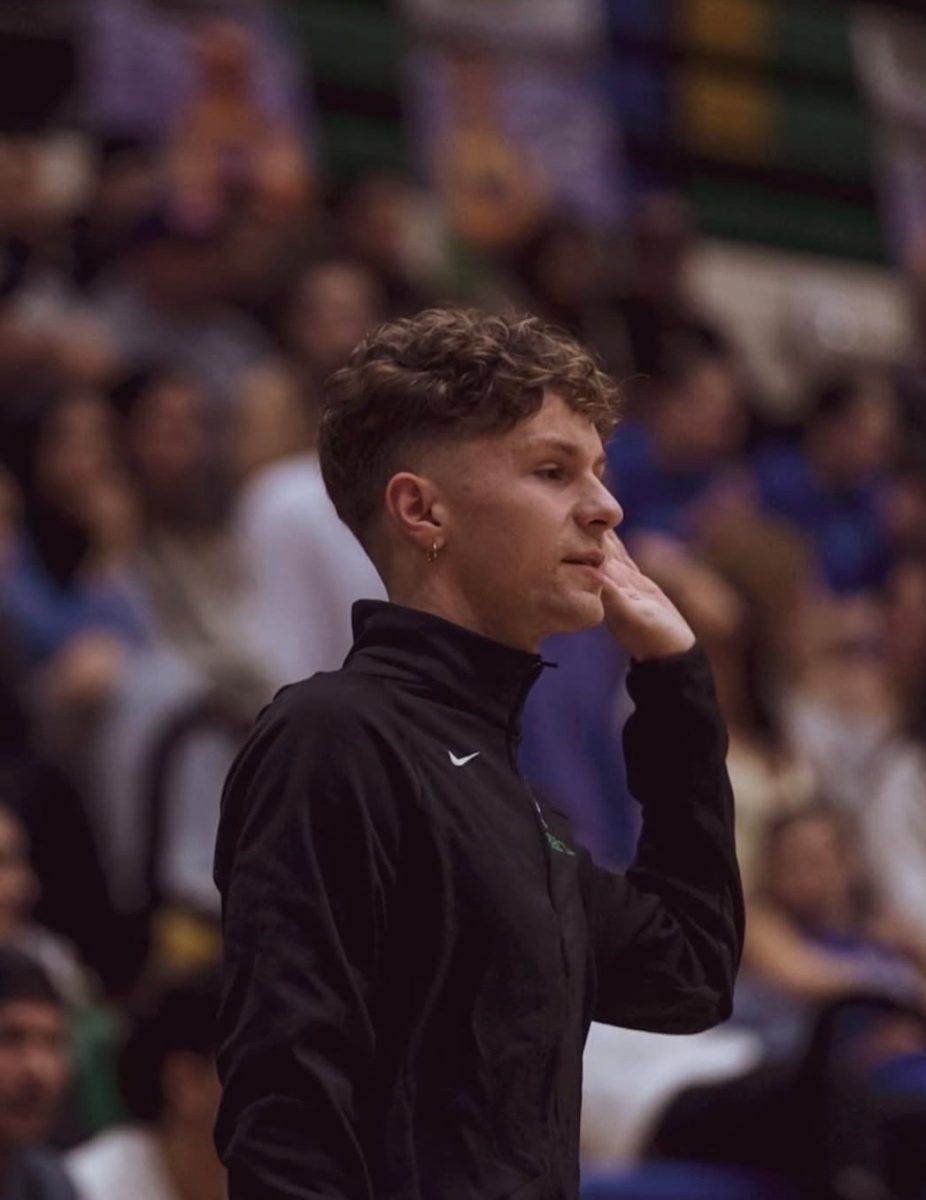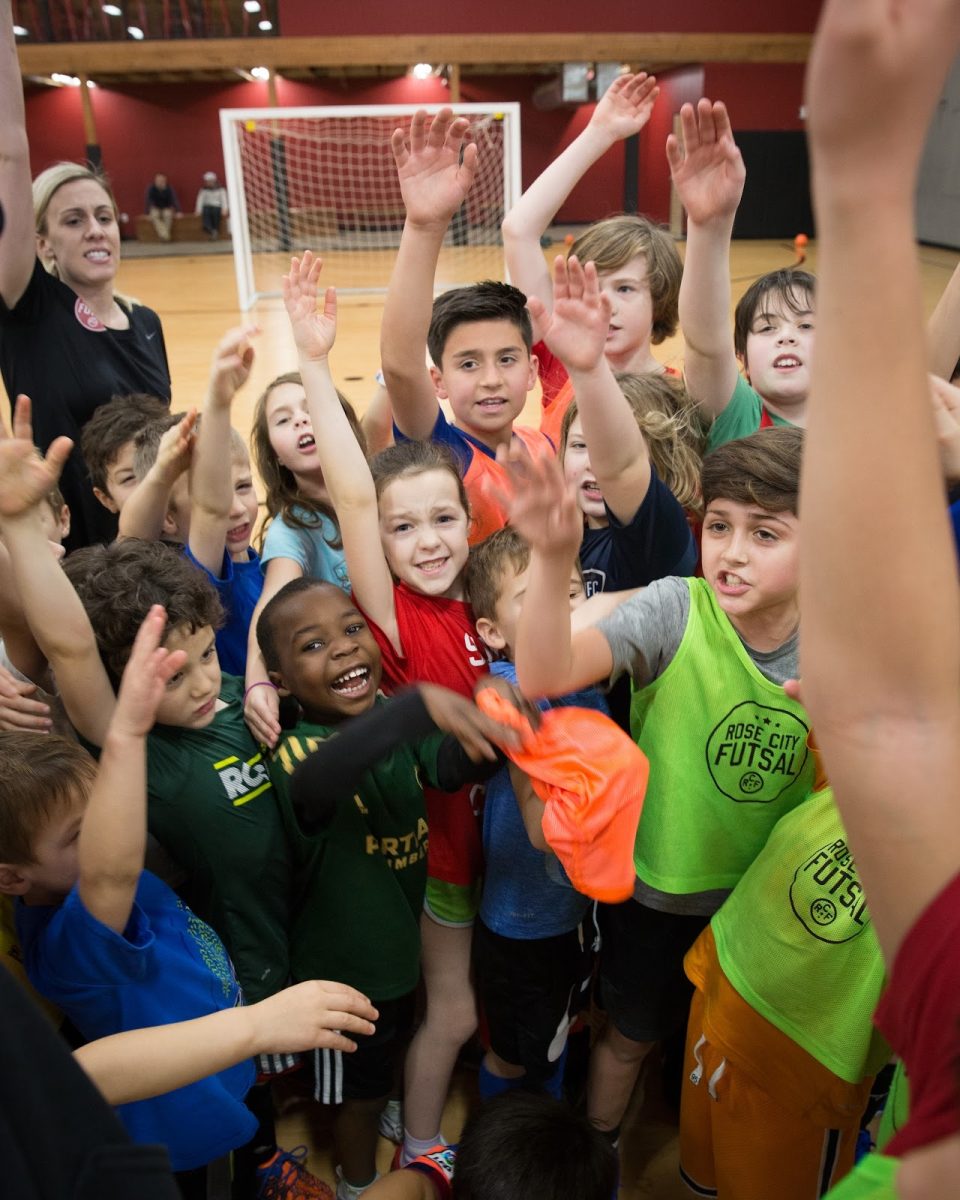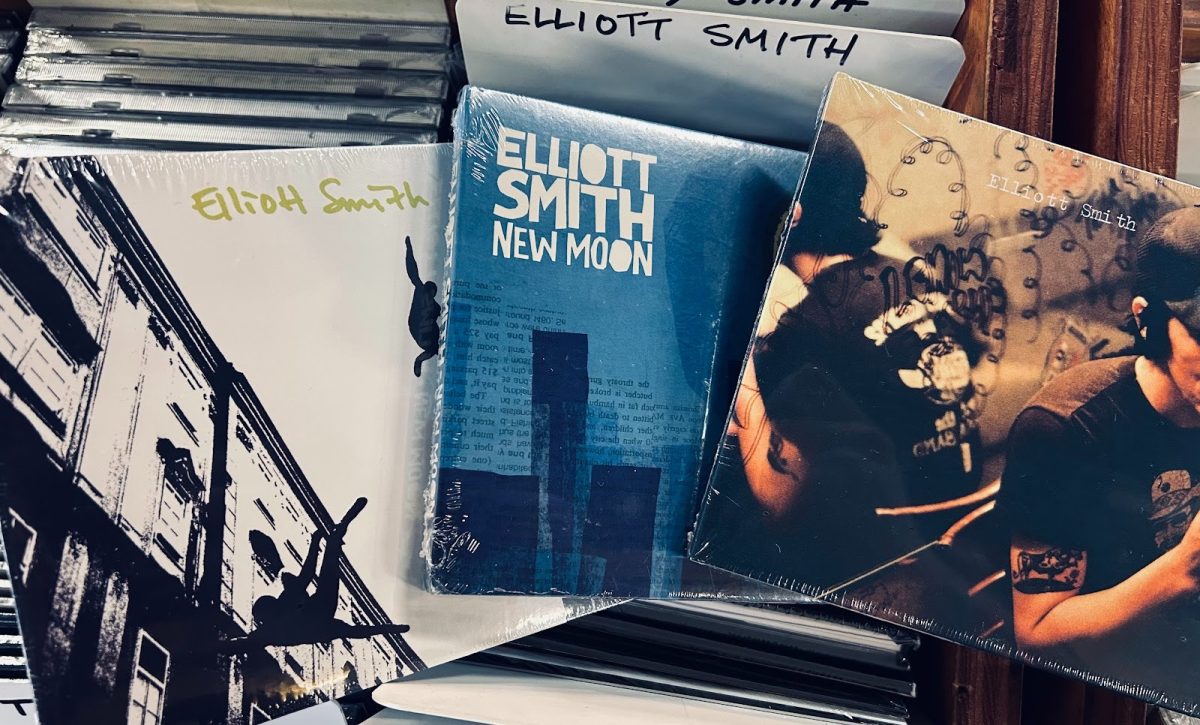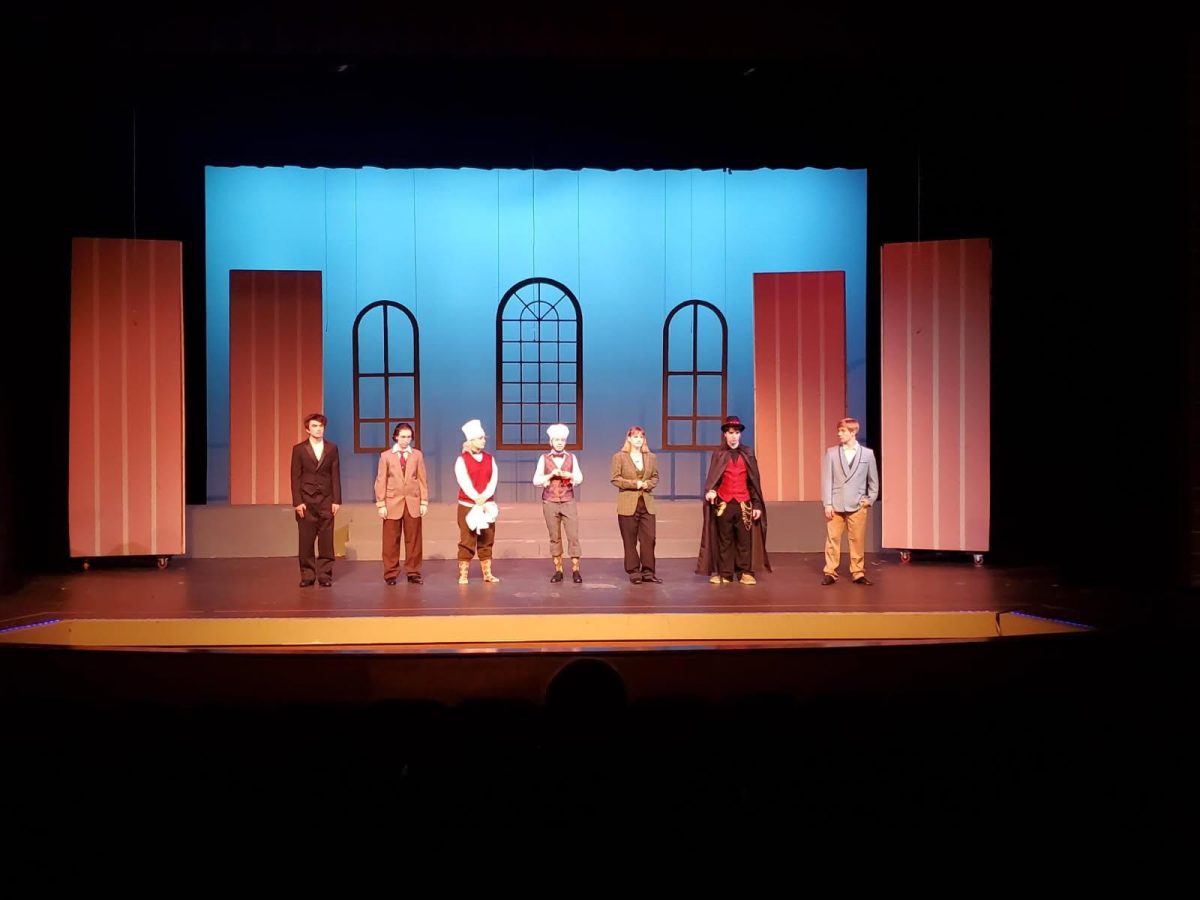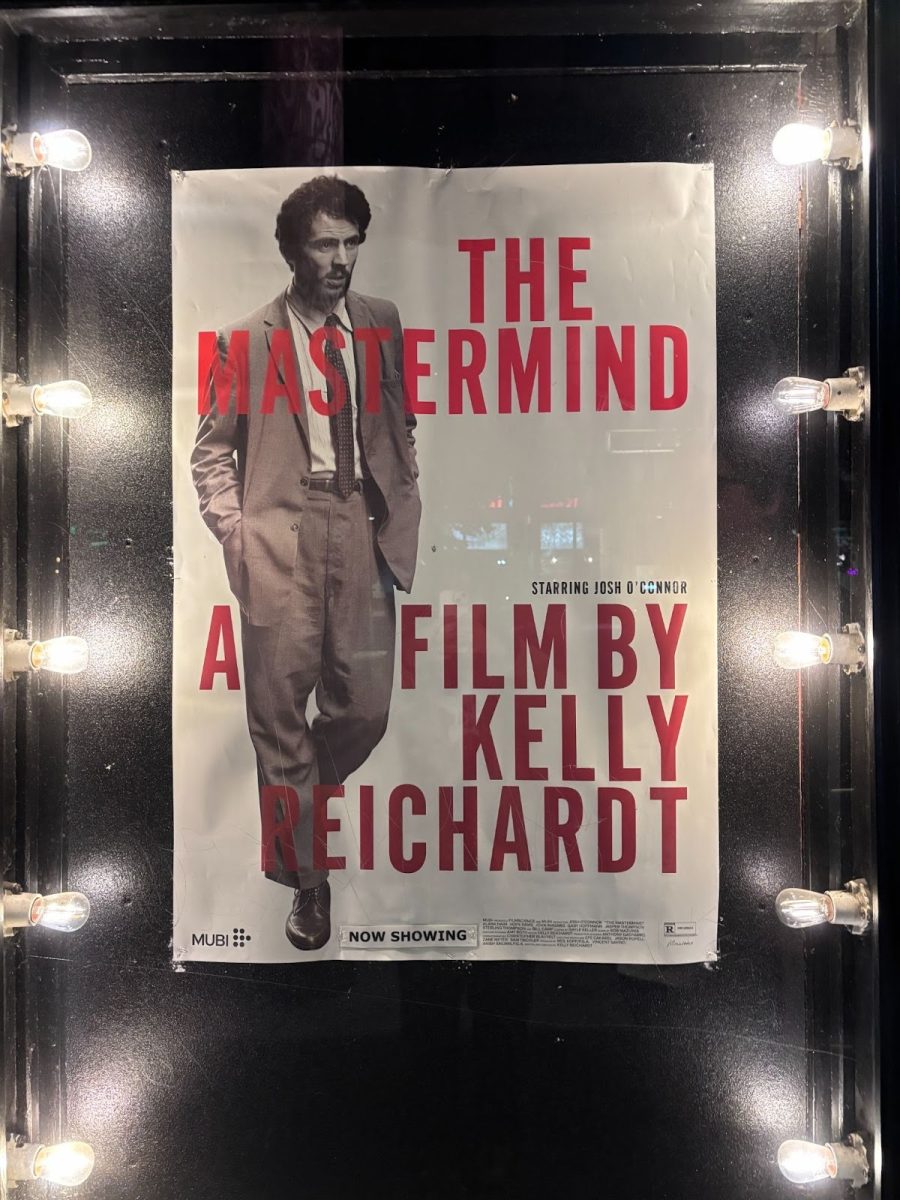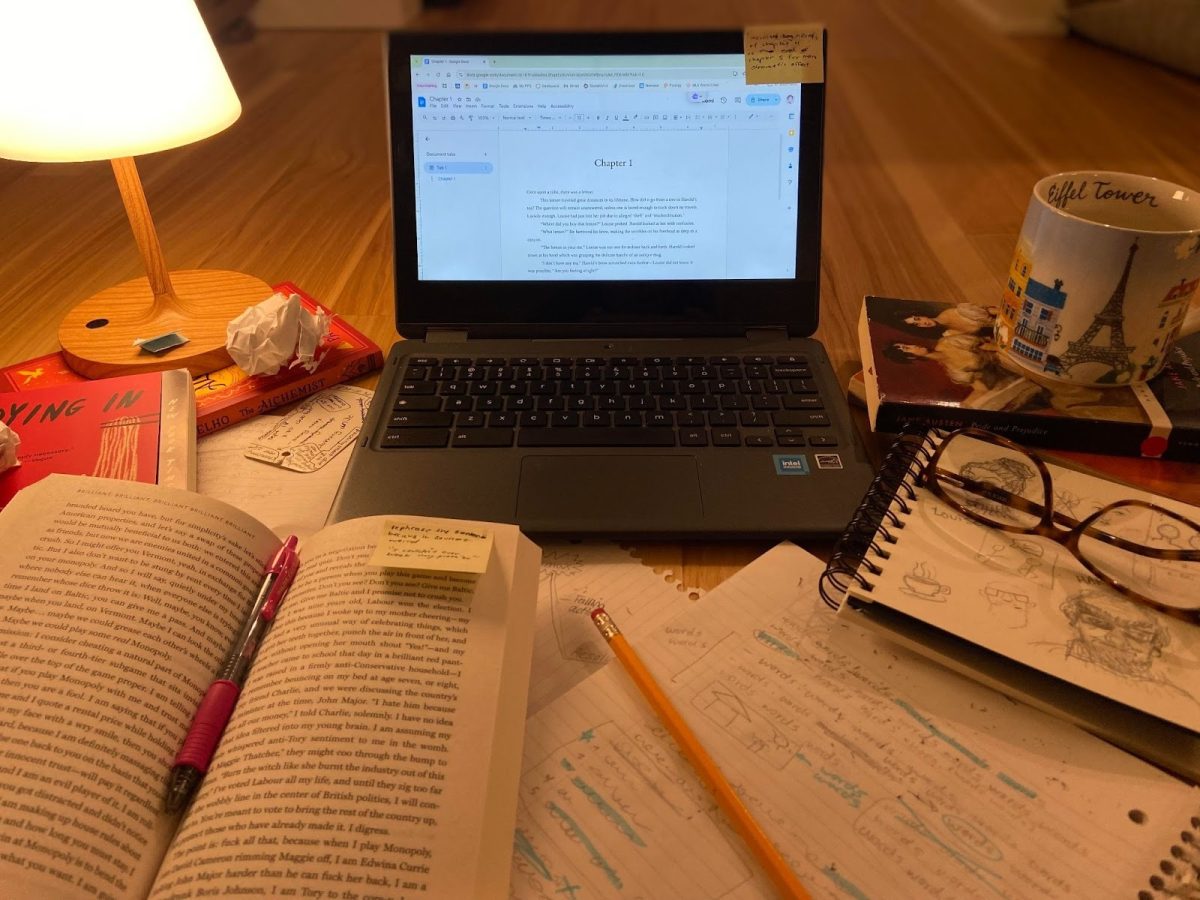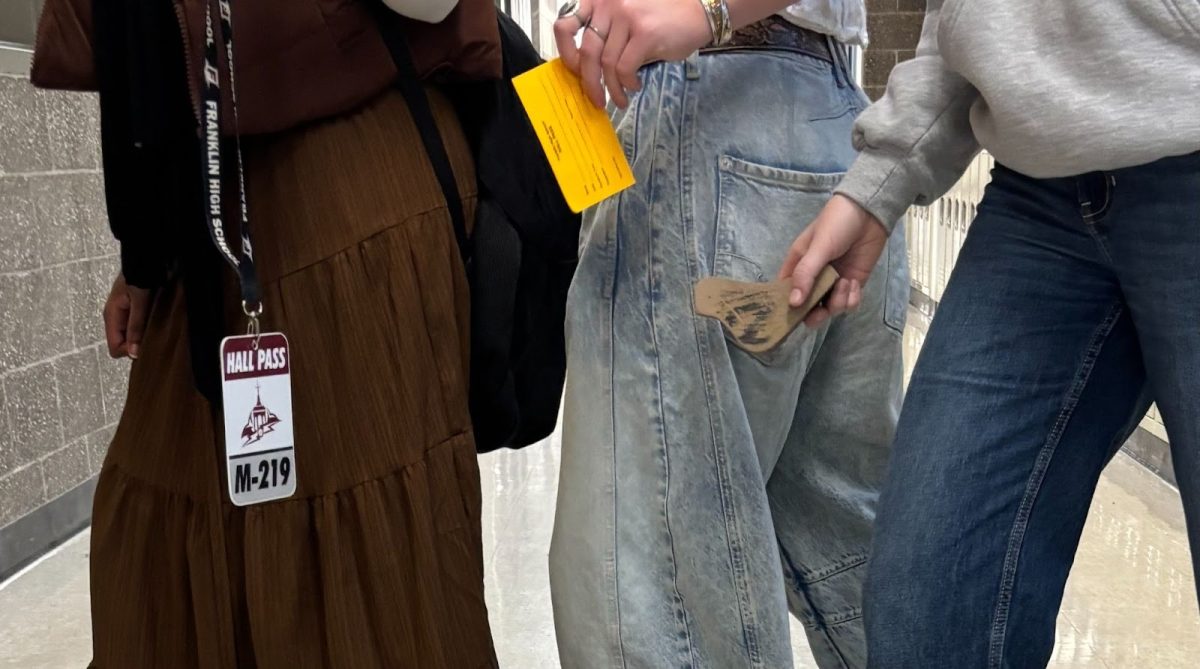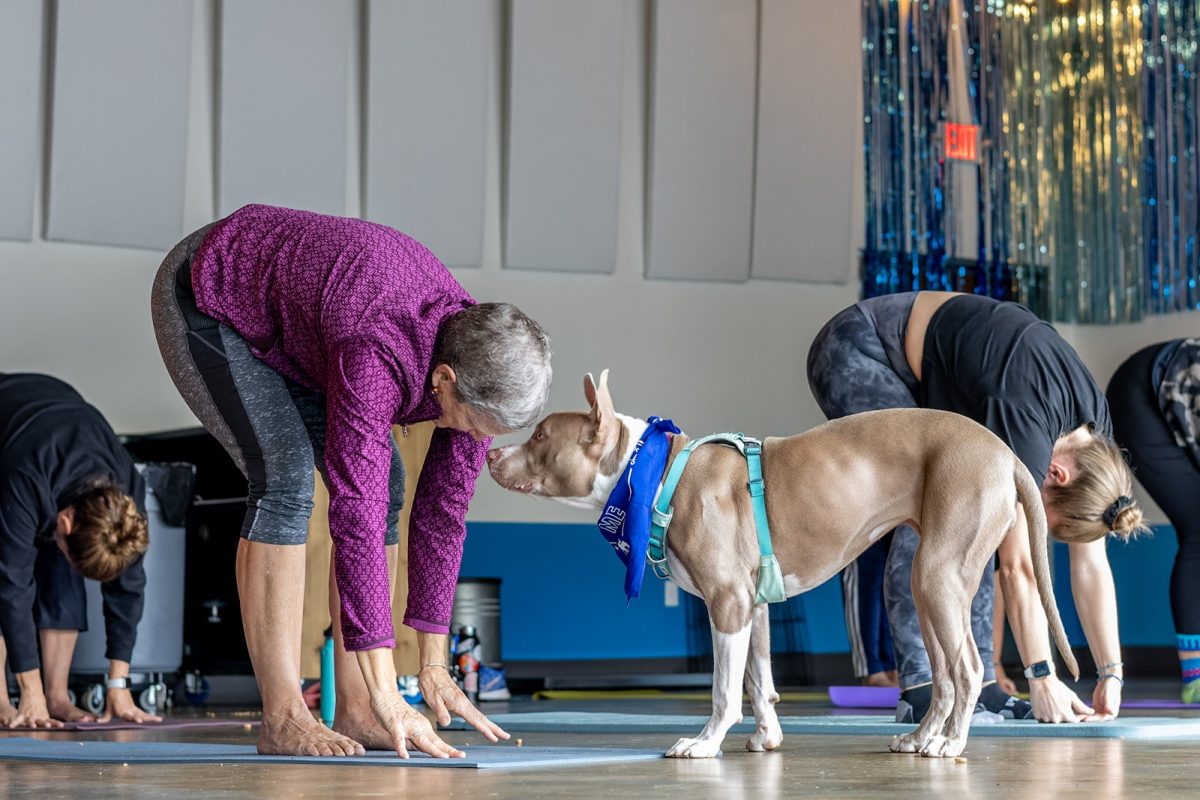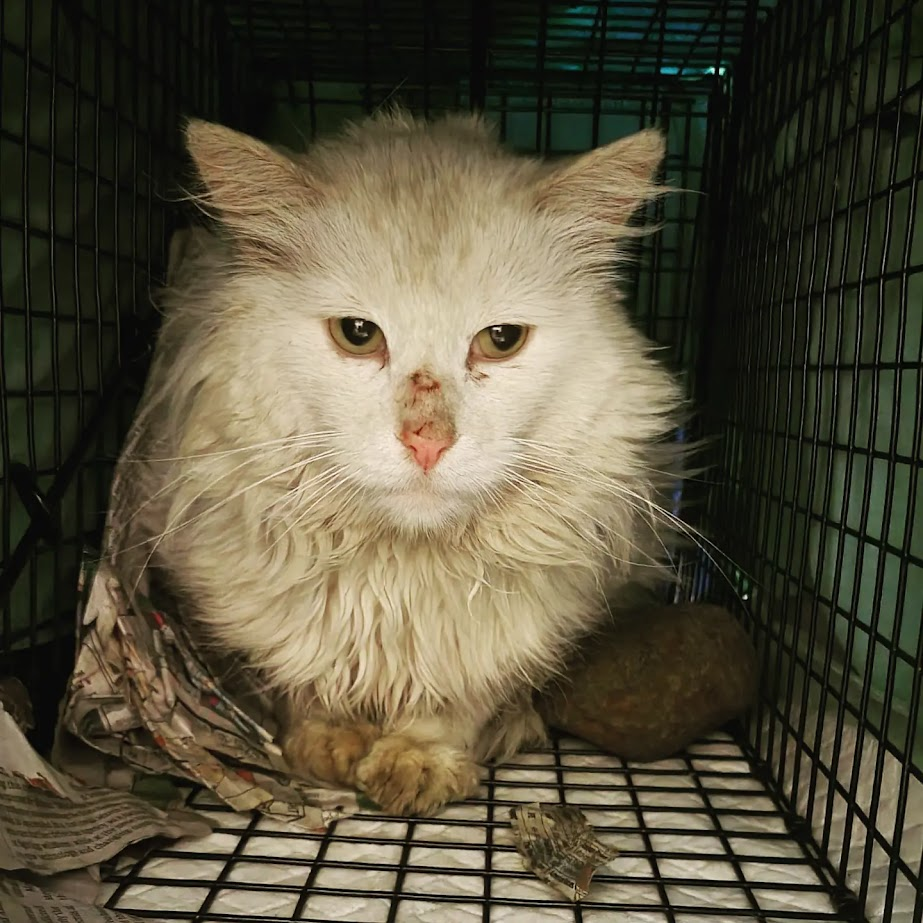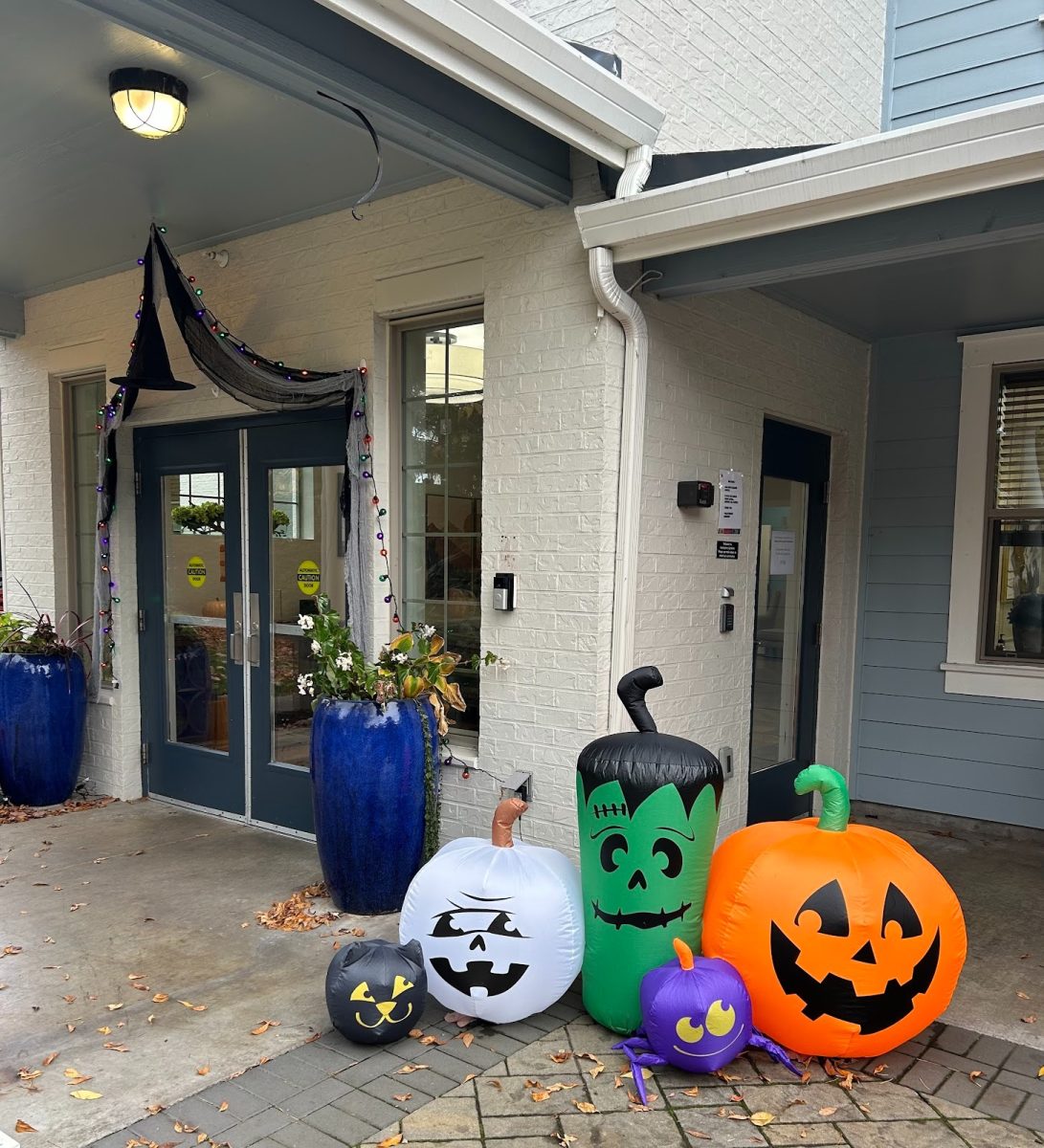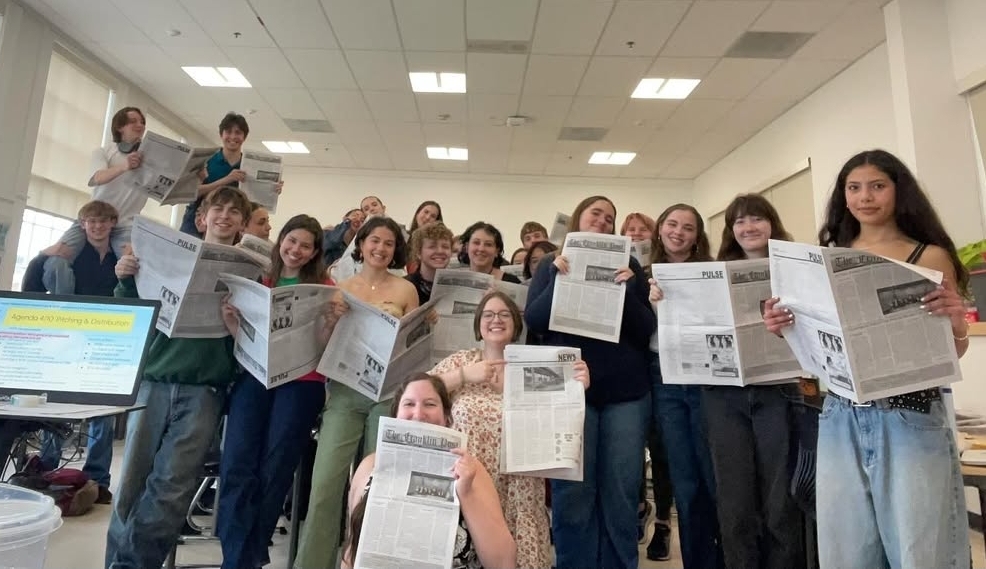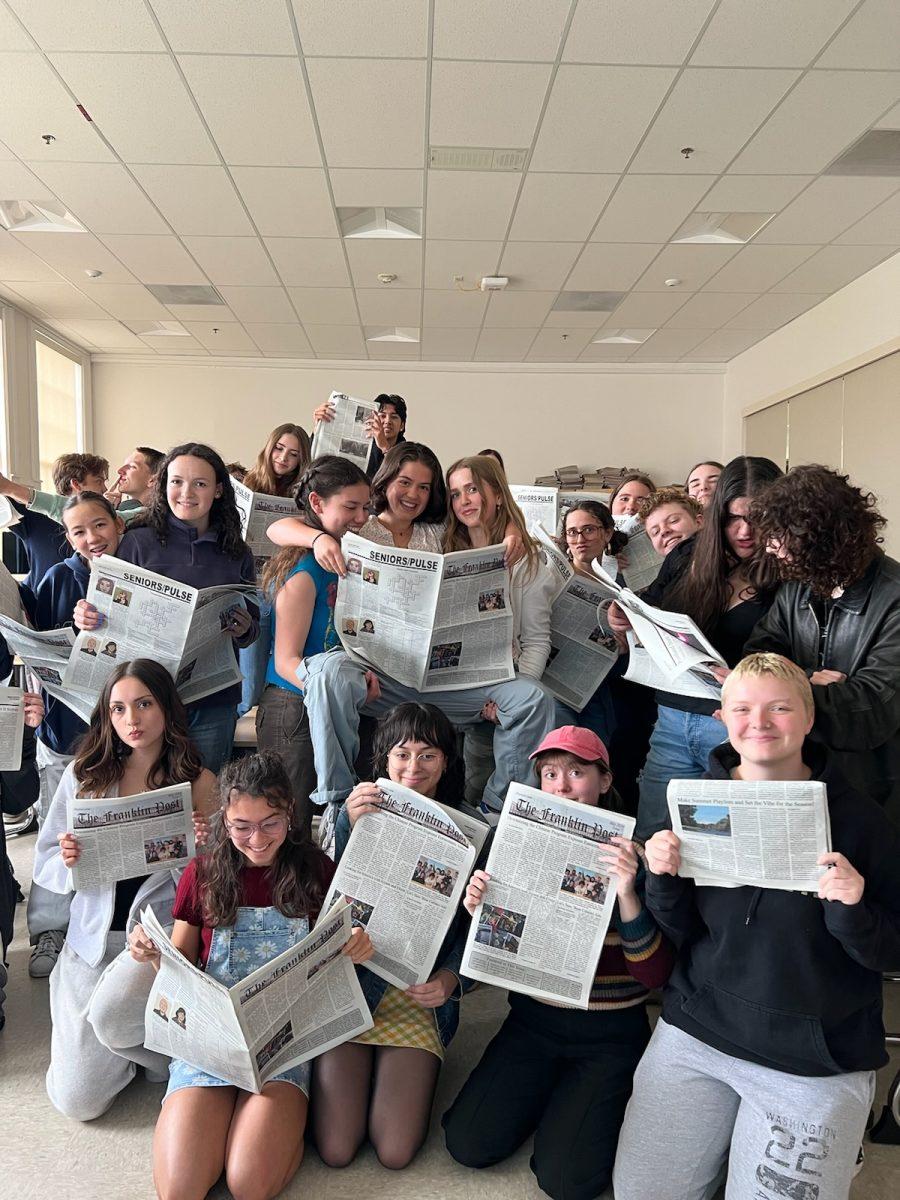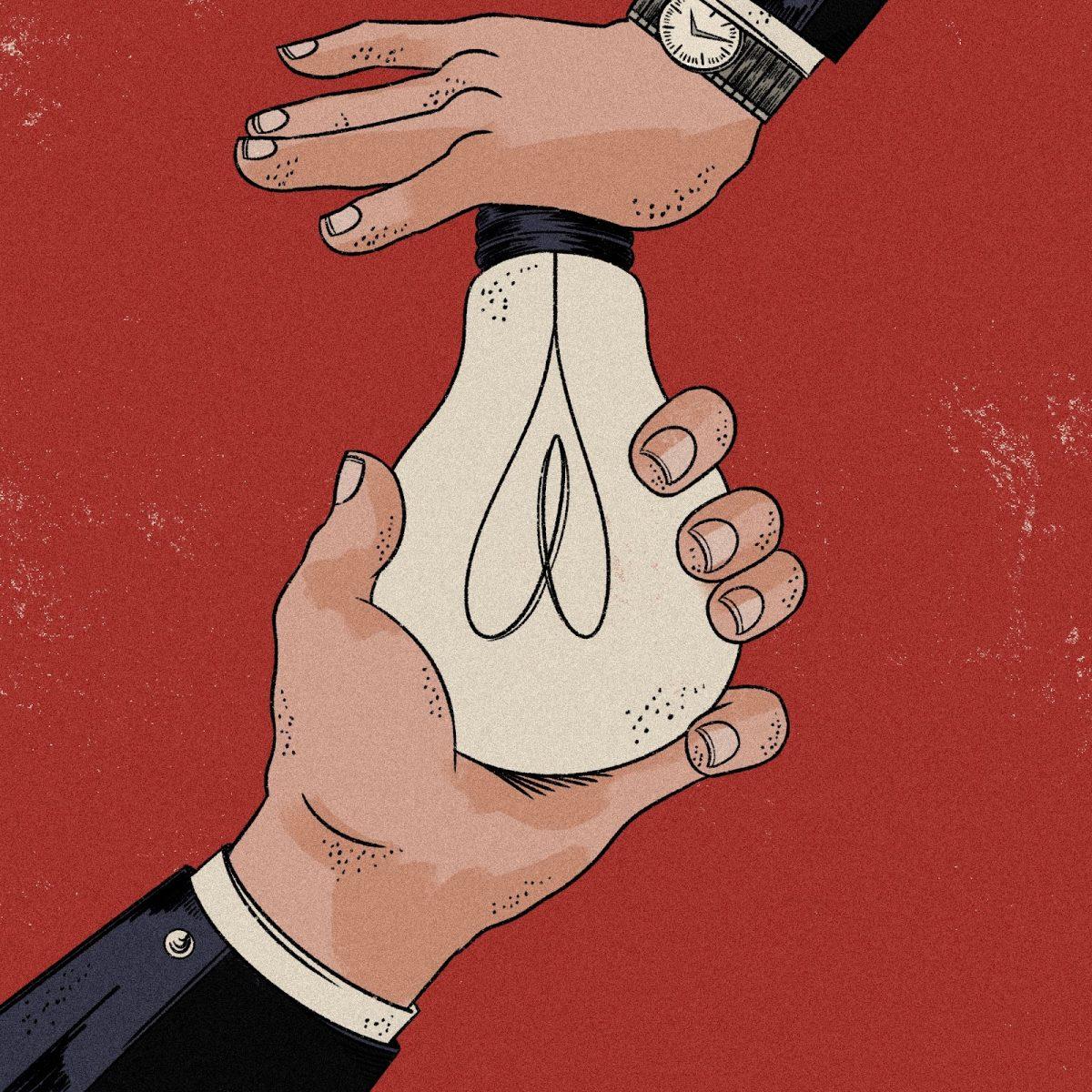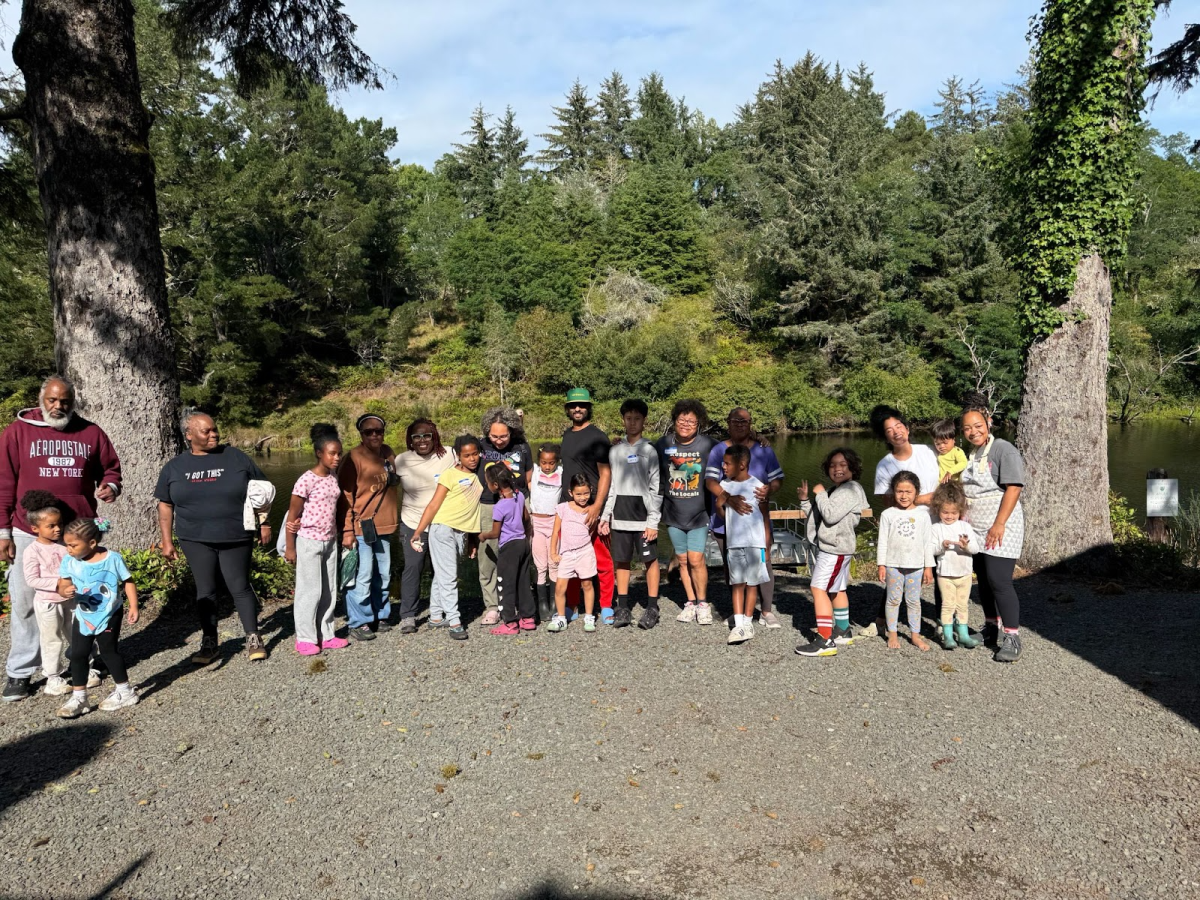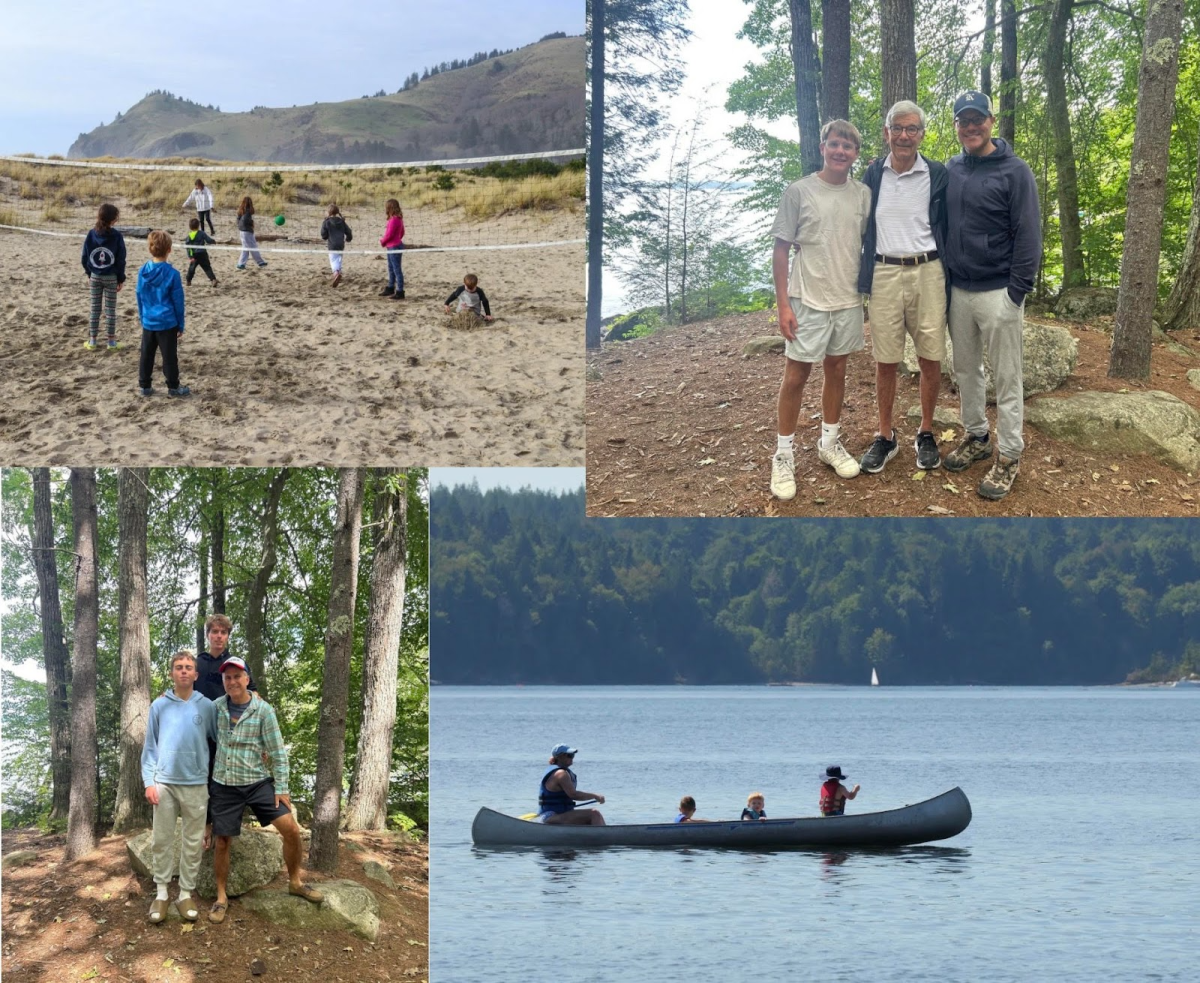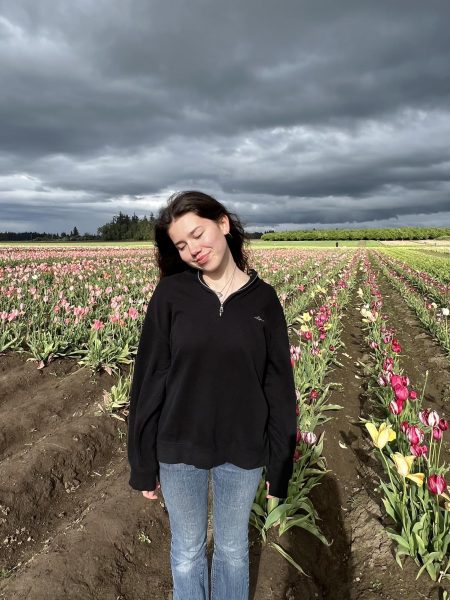
Red Van Grow — or just “Red,” as he tells me to call him — meets me inside the quaint purple walls of Tōv Coffee, an Egyptian-inspired coffee shop originally housed in a double-decker bus. It’s the sort of hole-in-the-wall place you walk past 100 times before discovering its delights — live music, an expansive menu, and joyful clientele. Chances are, you’ve also walked past Red, who perches on Hawthorne’s sidewalks, ready to speak with the shoppers bustling in and out of the street’s many stores. If you spot a man in a crochet fungi hat beaming as he hands out art, you’ve found Red and his wicker “basket of dreams.”
My conversation with Red feels quintessentially Portland — quirky and serendipitous in the best way. In the city whose motto is “Keep Portland Weird,” a cup of chai with a stranger is a rather normal Tuesday. These interactions are routine for Red, who has spent years connecting with people through his art. He explains, “During my travels, I hit 20 different states to see what it was like. I’ve seen someone wake up, eat breakfast, go to work, work, get off work, go home, go to bed, wake up, and do the normal thing. … There’s no change: blue jeans and just plain shirts.” That shifted when he moved to Portland. “There’s the weird people wearing the flowy pants like they’re stuck in the ’70s and ’80s, the people with the dyed hair, the people with only half the hair. … I mean it’s so vast that … weird has become normalized as a group,” Red observes.
“Weird” in Portland means pretty much anything that the city endorses, whether that’s wild peacocks or wild hipsters. Portland is famous for just about every hyperspecific ranking imaginable. Best pizza, most strip clubs per capita, least religious — you name it, and there’s probably a Willamette Week article bestowing the title upon the city.
Ryan Daniel, a street photographer known as @palebluewave to his 281,000 Instagram followers, sees the full range of Portland’s weirdness daily. “[My work has] solidified that Portland is a real city because it’s so unique and true to itself, and the people are so authentic,” he describes.
Beyond its inhabitants, the city is beloved for its walkability, bike culture, diverse food, art scene, bagpiping unicyclist, and — depending on who you ask — its rain. Real estate company Redfin puts Portland in the top 10 rainiest cities in the United States, which many Portlanders have embraced, often while rejecting umbrellas. Daniel comments, “The rain is a good metaphor for Portland in general; it’s not perfect, but then there are days that make everything worth it.”
Another benefit of Portland is its location. Karim Alaeddine of Living Room Realty, who has worked in the real estate industry since 2006, highlights the city’s unparalleled access to nature. “It’s pretty amazing to have mountains, the ocean, giant rivers, and huge lakes,” he says. “We fill this neat niche for a cool, mid-sized city on the West Coast. The combination of all that, I think, is what’s protected us from severe real estate downfalls in the past … and I also think it’s what makes people keep coming.”
Even as people celebrate Portland’s authenticity, the city has constantly struggled with who exactly it lets be authentic. Portland was founded on land stolen from Native American tribes, the Portland Expo Center was the site of the imprisonment of 3,676 Japanese-Americans in World War II, and Oregon as a whole was a white-only state for a long time. Racism persists to this day, with demographic shifts in historically Black neighborhoods like Albina serving as prime examples of how gentrification and redlining harmed many Black Portland communities. Even today, according to the 2024 census, Portland is 67% white.
Another group that Portland’s branding often overlooks is people experiencing houselessness. Multnomah County’s Joint Office of Homeless Services reports that, as of February 2025, 14,864 people are experiencing homelessness in Multnomah County. The city and county’s various efforts to address this have been criticized, either for seeming too lenient, like the Multnomah County commissioners’ funding of tent distribution, or for seeming too harsh, like Portland City Council’s May 2024 ban on public camping.
This issue is not specific to Portland; cities nationwide are struggling to ensure that everyone has access to shelter. Per the Brookings Institution’s 2023 data, among major U.S. cities, Portland has the sixth-highest prevalence of homelessness, and 57% of those experiencing homelessness in Portland are unsheltered. Each of these individuals is a Portlander with their own story, an element perhaps missed in conversations about houselessness.
Exacerbating these struggles is the fact that many lost their jobs during the pandemic, and a negatively affected job recovery rate persists in Portland; the Portland Metro Chamber’s 2025 State of the Economy report shows a decline in annual employment growth for 2024. These struggles are often attributed to the state of Portland’s downtown, which has remained down 40% from pre-pandemic foot traffic levels.
In response to this host of issues, recovery efforts — both grassroots and city-led — are now in motion. Former Mayor Ted Wheeler established a Central City Recovery Plan that included targeted investments; public events; increased police patrols; and the 2022 creation of the Public Environment Management Office (PEMO), which aims to clean and activate public spaces.
In 2023, Governor Tina Kotek formed the separate but similarly-named Central City Task Force “to articulate a compelling, actionable vision and develop a set of near-term, achievable strategies to revitalize the economic future and well-being of Portland’s Central City,” according to the task force’s website.
Under the new administration of Mayor Keith Wilson, recovery efforts are continuing. In his May 2 State of the City Address, Wilson stated, “I’ve never been more optimistic about Portland’s future and our ability to solve the issues we face. I continue to believe our best days are ahead of us and the Portland renaissance we all want is at hand.” At the event, he reaffirmed his commitment to supporting PEMO.
Citizen-led recovery initiatives like Portland Is What We Make It are also gaining momentum. Founded in 2023 by advertising company Wieden+Kennedy, the campaign aims “to act as a reminder and active brief for everyone that this place has the potential to be everything we want it to be when we come together and make it the best place possible,” says Wieden+Kennedy Creative Operations Manager and Portland Is What We Make It Account Manager CJ Corey. The project has partnered with local businesses to design Portland Is What We Make It products, created multiple murals and art installations around the city, and advertised other local initiatives. Corey emphasizes, “Our ultimate goal has been to encourage individual community members to take action in their everyday — big or small — whether it’s volunteering, attending community events, helping clean up, or even spreading the word.” The project is volunteer-based, and all are welcome to participate.
Portland Is What We Make It seeks to recognize that some of Portland’s strongest appeals, such as the people, are intrinsic. While Portlanders are often characterized by media and outsiders as deeply individualistic, that isn’t necessarily the interpretation of Portlanders themselves; everyone interviewed for this article mentioned the kindness and community of their fellow Portlanders. Daniel remarks, “What I found through [my photography] is that Portlanders are, in a general sense, extremely nice. … They’re open to this really random and kind of strange experience that I’m confronting them with.”
Perhaps what Portland needs most is not reinvention, but rather an increased appreciation of what it already has. As Red summarizes, “A lot of people [who] have talked badly about Portland have just heard from someone else talking badly about Portland, … talking about how … people come here for the wrong reasons. Well, no — people are coming here to reach solace and happiness, and we should treat it as such.”


